The arms of Robert Hillberg. Part three

Dear readers! This is the third material in a series of publications devoted to arms, designed by American designer Robert Hillberg (Robert Hillberg).
In previous installments, I introduced you to multi-shotguns. Winchester Liberator (Liberator) и Colt Defender (Defender).
Today I will introduce you to a COP .357 Derringer pistol.
Strange as it may sound, the COP .357 Derringer is a direct descendant of the Winchester Liberator and Colt Defender shotguns. It became a logical development of the concept of multi-barreled weapons proposed by Robert Hillberg in the middle of the 60s of the last century. This small gun used the same technical solutions that were used and honed on Hilberg's shotguns - with the only difference that our today's guest has all the components in a reduced size.
It was rumored that, according to statistics, in the USA every 5 policeman dies from his own weapon, which falls into the hands of criminals. Perhaps that is why at the beginning of the 80-ies, Robert Hillberg thought about what should be an auxiliary melee weapon for police officers.
And he argued, probably, something like this: the main properties that any weapon should have is its extreme simplicity and high reliability. (And on the simplicity and reliability, he ate the dog, constructing and modernizing all sorts of “Liberators” for all kinds of “Cheburators”.) In addition, given the police specifics, in addition to the reliability of the action, the backup weapon must be adapted for hidden wearing, its sudden extraction and instantaneous use .
Often, this is the “last chance” weapon designed for use at minimum distances, so ideally, self-defense should look like this: suddenly pull out the weapon, pull the trigger and shoot ahead of the curve.
The revolver is suitable for these purposes, but not everyone is satisfied with its large dimensions because of the drum mechanism, so it makes sense to offer the policeman a product that has the advantages of a revolver, but is devoid of its disadvantage associated with the dimensions.
Traditionally, the weapon of the last chance was considered to be the “Derringer” class pistols. So why not try to combine the advantages of “Derringer” and a proven system of shotguns?
Some time later, a rather compact pistol appeared, called COP, which stands for “Compact Off-Duty Police”.
Especially for its production in the city of Torrance, California, was registered (now does not exist) campaign called COP Incorporated.
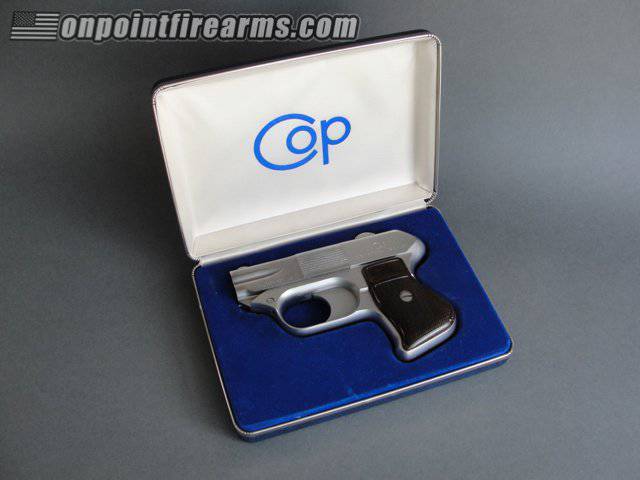
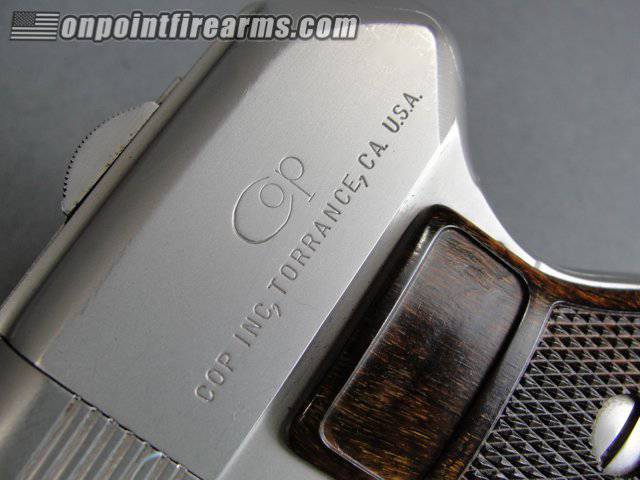
Derringer was distributed by another local campaign: M&N Distributors of Torrance. Since the pistol was designed for the powerful .357 Magnum revolving cartridge, its full name was COP .357 Derringer. By the way, its design allowed to shoot with .38 Special cartridges without making any changes.
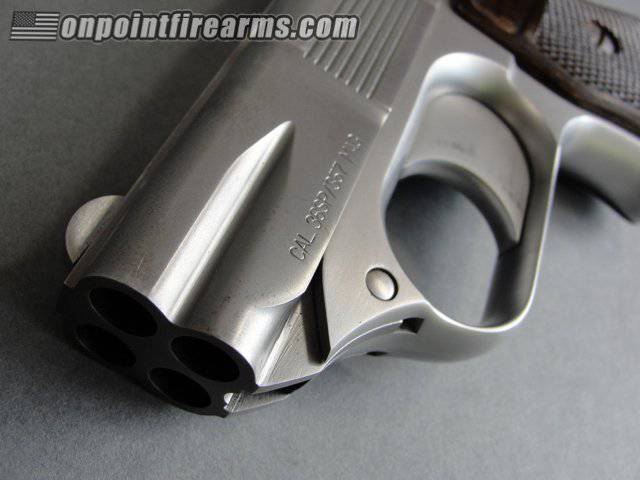
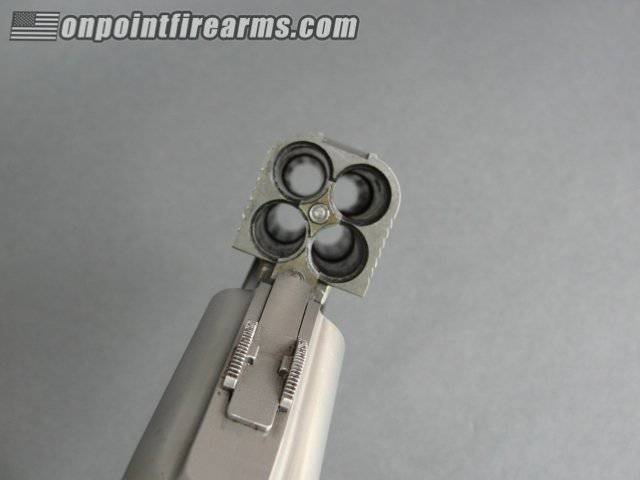
COP .357 refers to the type of multi-gun manual pistols.
The gun consists of 54 details. Its body is completely made of stainless steel.
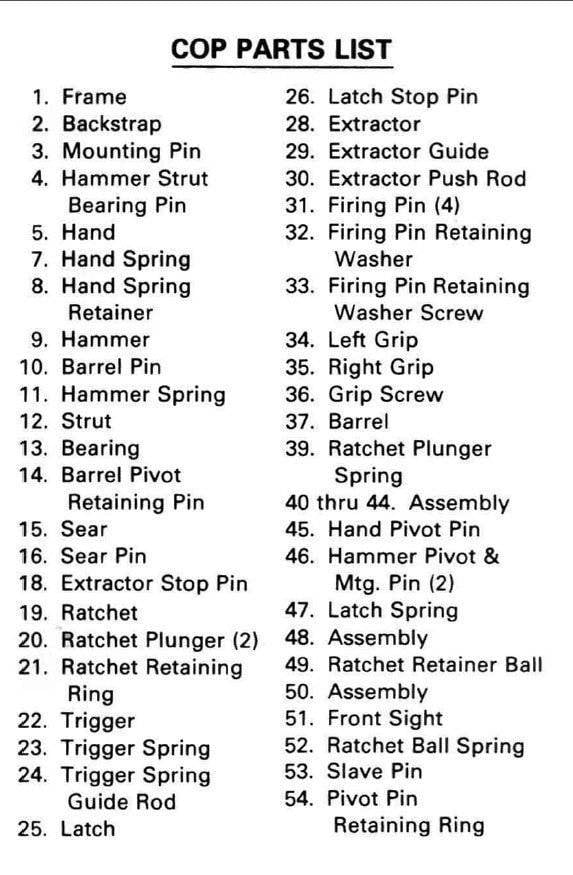
It is a four-shot weapon with a pair of four barrels in a single block, made in the form of a single piece.
Each trunk matched its separately installed striker.
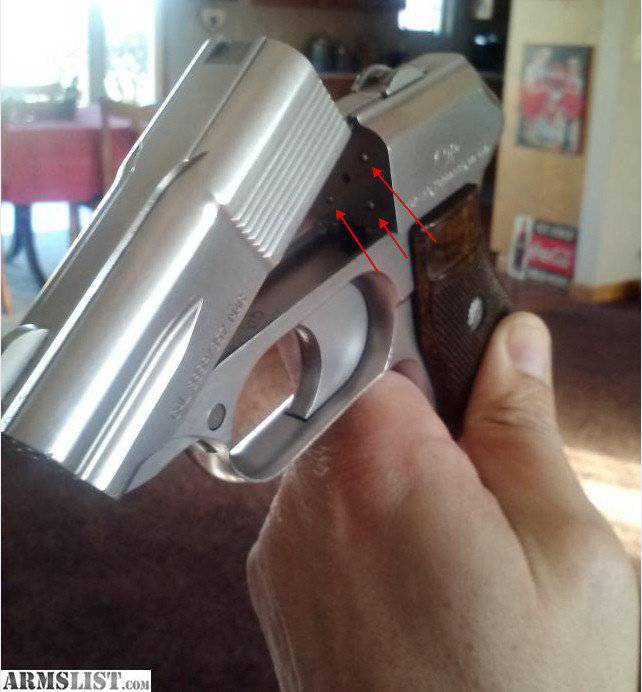
The block of trunks is connected to the frame with the help of a hinge in its lower rear part.
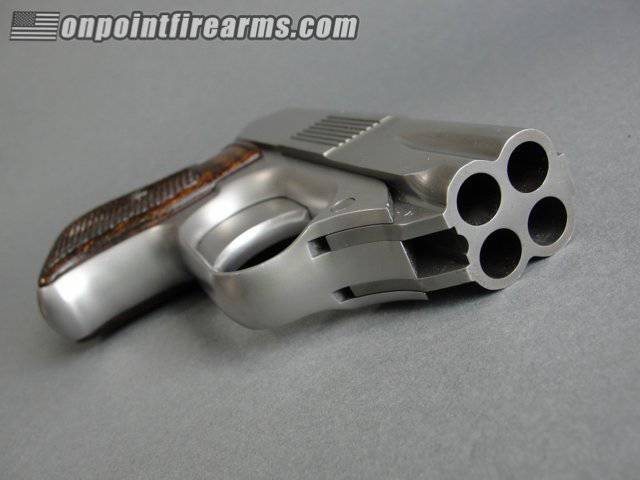
Equipment and reloading of the pistol are carried out manually, one by one cartridge and produced by perelamyvanie block trunks down, according to the principle of double-barreled hunting rifle. Cartridges are partially removed from the chamber through the ejector. Then the sleeves are extracted one by one by the hand.
This brings to mind the comment on my first article in this series (about the Liberator):
Latch lock block trunks located on the top of the frame of the gun and in addition performs the function of the rear sight.
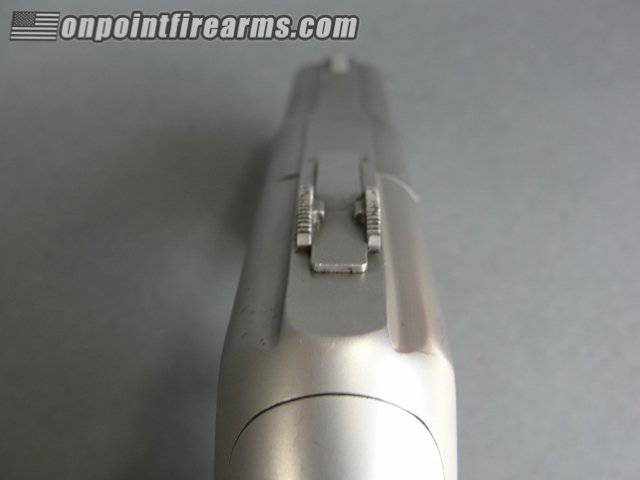
To open the lock and break the block of trunks, it is necessary to pull the rear sight on yourself with your thumb. The upper surface of the rear panel is grooved like a coin edge: so that the finger does not slide off.
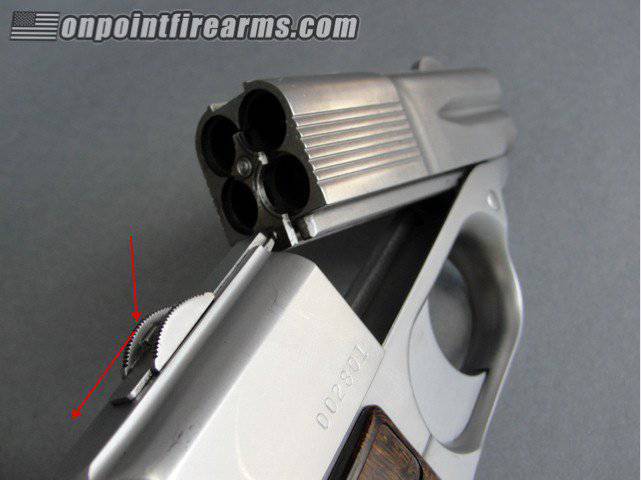
To open the COP .357 gun barrel block, put your thumb on the rear sight and pull it towards you.
But the four barrels and the way of locking the block of barrels is not the only resemblance to Robert Hilberg’s Winchester Liberator shotgun. The COP .357 Derringer pistol uses a trigger mechanism, which, by its principle of operation, was very similar to the one on the Liberators of the first generations. This is a Double Action Only trigger (shoots only with self-cocked) with a hidden type trigger. That is, each time the trigger is pressed, the mechanism is first cocked, and then it is lowered and, accordingly, shot.
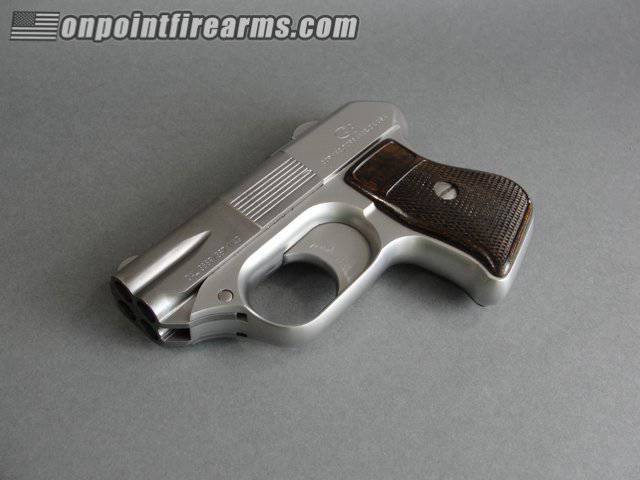
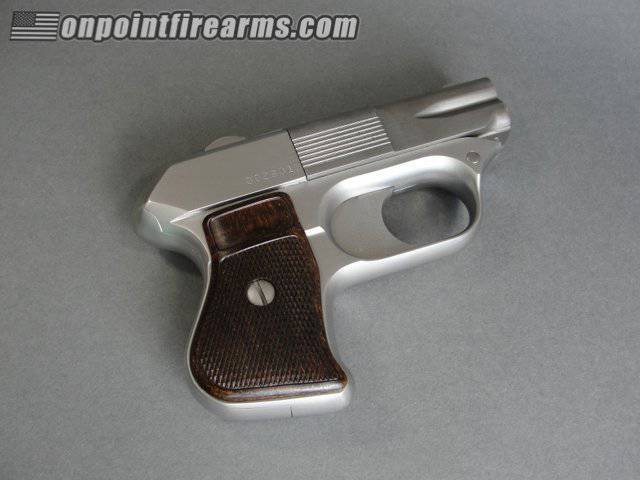
Since the COP .357 effort descent was "non-child", many users admitted that they never managed to make a series of four shots: my fingers and hand were too sore, and the impact from the powerful cartridge was considerable. The sequence of shots was due to the fact that each time the trigger was pulled, the percussion mechanism turned 90 degrees and hit the next striker.
Since it is generally accepted that a gun with a trigger that shoots only with a self-cocked device does not need a safety device, because a shot can only occur when the trigger is fully squeezed out, there was no manual safety device in this gun.
In October, 1983 was issued and published a patent US4407085 A for the main components of the gun.
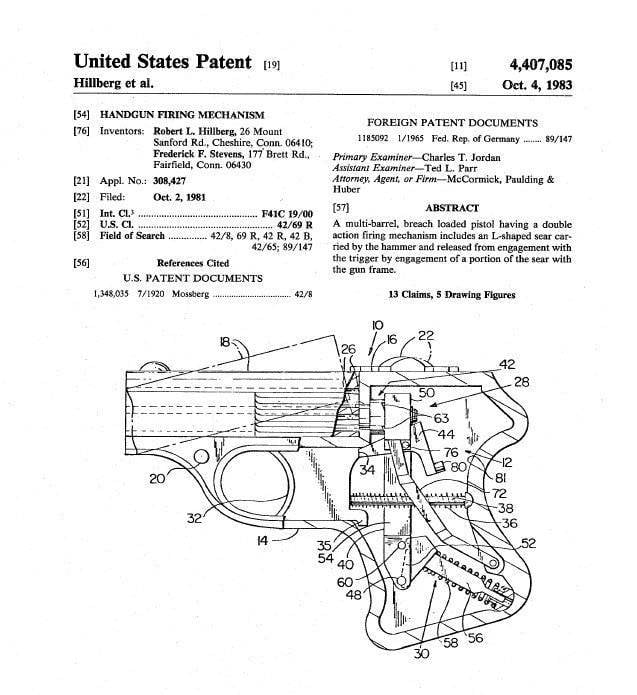

There was also an opposition patent: US publication 1348035 A from 27 July 1920. It was issued to Oscar Mossberg (Oscar Mossberg). The patent contained a description and drawings of the main components for a compact multi-barreled automatic pistol. On the basis of these nodes Mossberg Brownie pistol was assembled chambered for .22 Long Rifle.
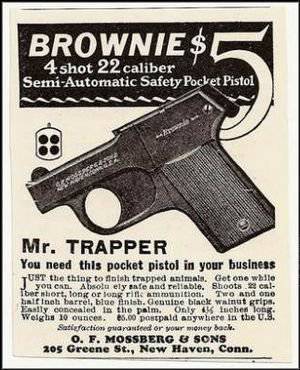
COP .357 Derringer was produced in small quantities, but it did not gain much popularity among the police or in the civilian market. Despite the fact that this gun was about twice as wide and significantly heavier than any automatic gun .25 ACP (6,35x15 mm Browning), its relatively compact size and powerful cartridge made this gun a good candidate as a weapon for the last chance ".
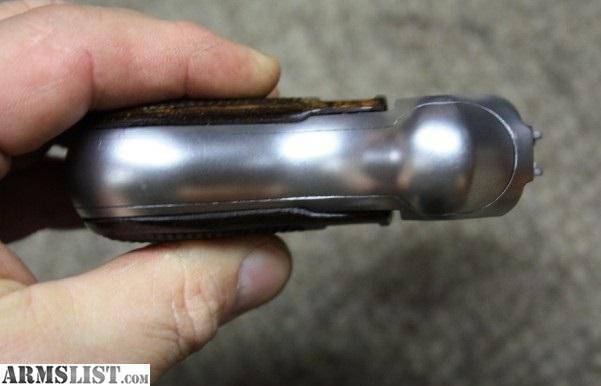
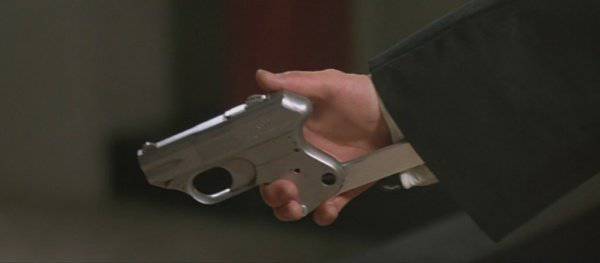
A COP .357 pistol appears, which has been moved into the palm by a mechanism hidden in the sleeve. And even though he is a four-charge player, the hero has thrown 8 out of him or even 9 times.
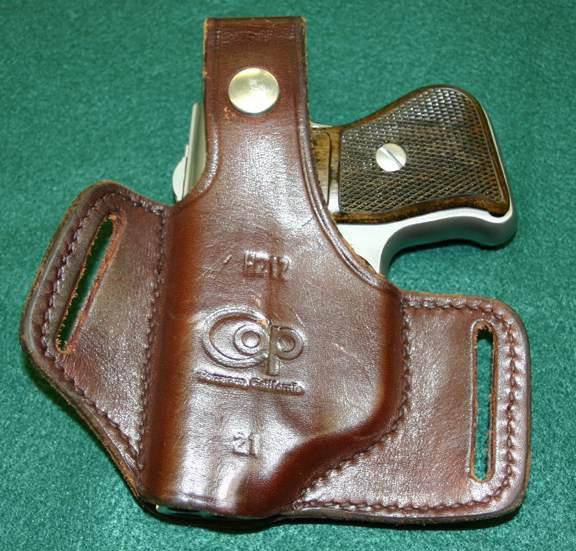
According to unconfirmed information, they tried to rectify the situation by releasing the COP Derringer version for a low-impulse cartridge .22 Winchester Magnum Rimfire 5,6 mm, but he, apparently, also did not go, and the production was turned.
In the 1990 year, its production resumed the campaign of American Derringer, but due to the lack of a sufficient number of customers, its production was soon discontinued.
At the moment, COP .357 pistols are quite rare and are collectible. Their average market value, depending on the state, fluctuates within 900 — 1000 US dollars. They say that “heavily used” can be found cheaper: bucks for 200-350.
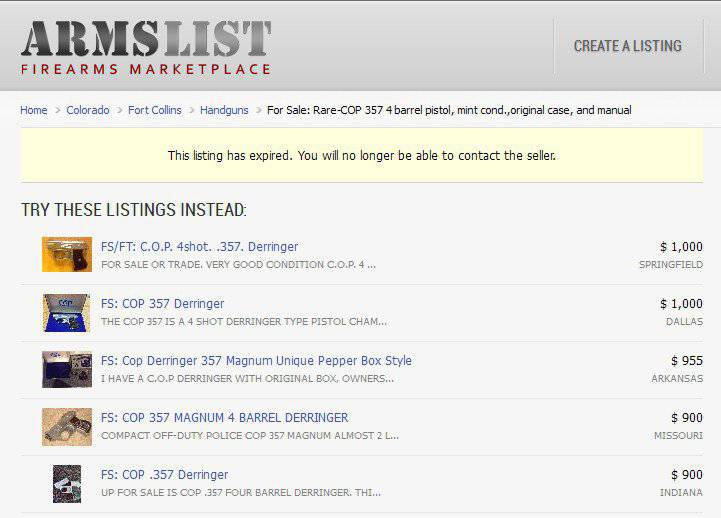
Before I proceed to the description of the replicas and its roles in the films, I enclose a brief specification of the COP .357 Derringer pistol:
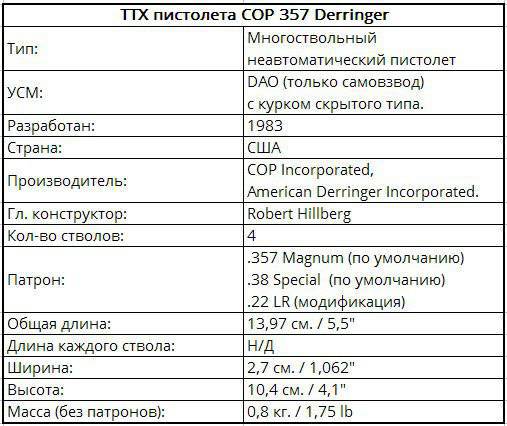
Airsoft
Marushin, a reputable manufacturer of Airsoft replicas, offers COP .357 Derringer pistols in 2 versions and 2 color versions:
The short barrel Marushin COP .357 is available in Silver and Black.
Price 89 US dollars.
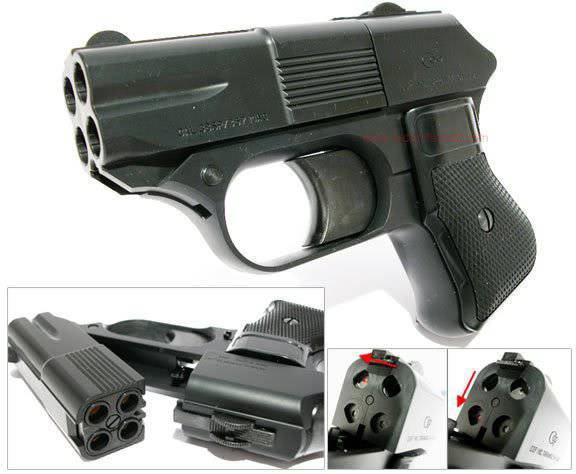
Marushin COP .357 with a long barrel is also available in Silver and Black colors. Price 94 US Dollar.
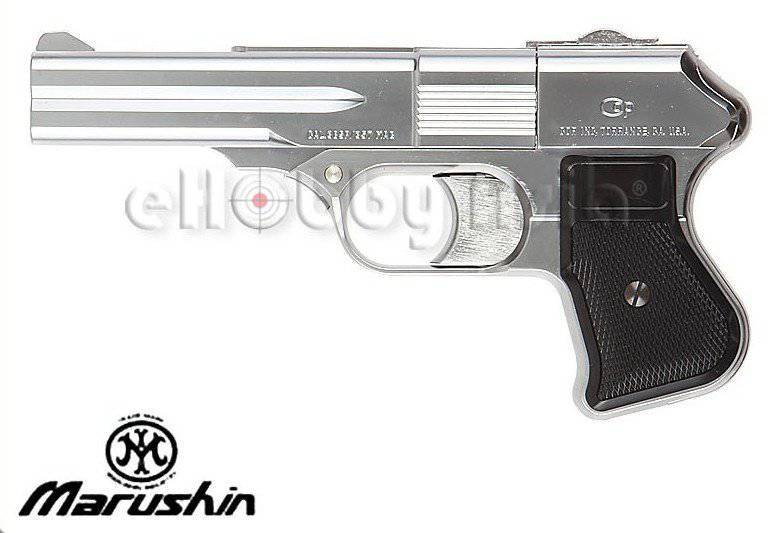
Cinema
COP .357 Derringer pistol was used as a props when shooting movies and television series, in anime, and even in a computer game.
First I want to highlight the work of Stephen Dane (Stephen Dane): he was an assistant art director of David Snyder during the shooting of the film “Blade Runner” (1982). This very assistant art director, before starting the shooting of the film, sketched out a few sketches of a certain “weapon of the future,” which he proposed to equip the main character with a painting by Dekard (Harrison Ford). Here are the sketches:
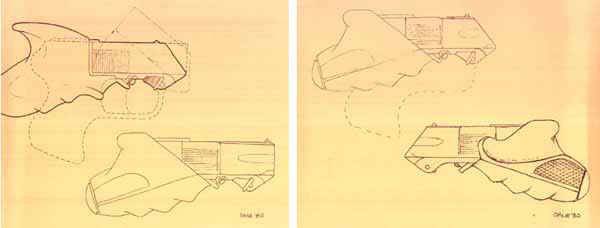
Soon, according to these sketches, the gun itself was also made, but the majority did not like it very much: it lacked a “zest”.
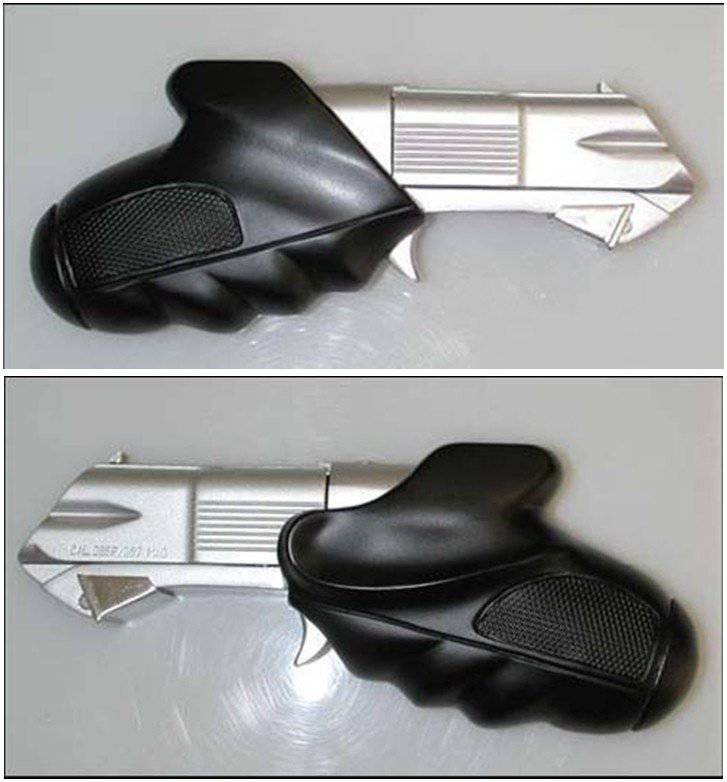
Then a second “blaster” prototype was proposed for Dekard. Here he is:
Agree that they depict nothing more than a slightly modified COP pistol. 357 Derringer. The second prototype already looked like it should look like cinema weapons, but it was also rejected (they say, Ridley Scott himself) and excluded Rick Dekard from the arsenal, but they armed him with “a cross between a bulldog and a rhino”: “Los Angeles Police Department - 2019 blaster ”Assembled from the components of the revolver“ Bulldog ”from Charter Arms and rifles Steyr-Mannlicher Model SL.
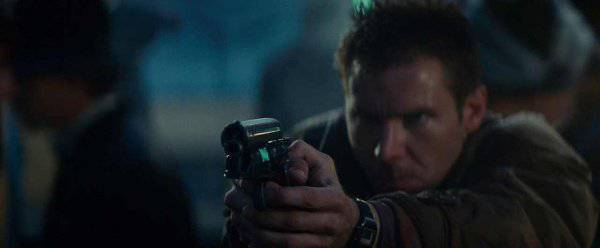
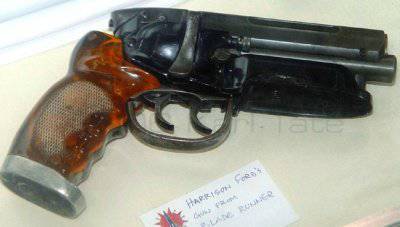
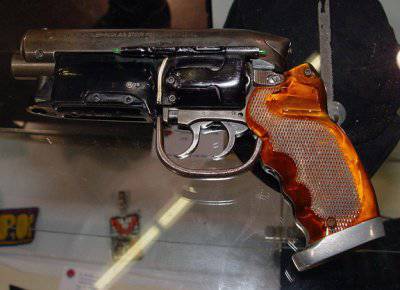
Instead, a completely normal COP .357 Derringer pistol was armed with Leon Kowalski (Brion James) so that he would shoot another “running” movie at the very beginning of the film: Holden (Morgan Poll).
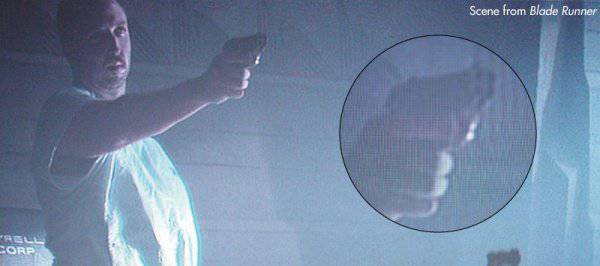

Here is a list of films that used a COP .357 Derringer pistol:
Blade Runner / Blade Runner (1982). Harrison Ford.
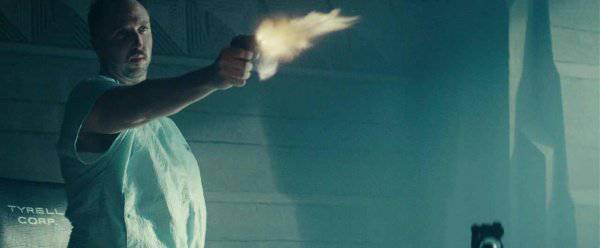
The Blue Iguana / Blue Iguana (1988).
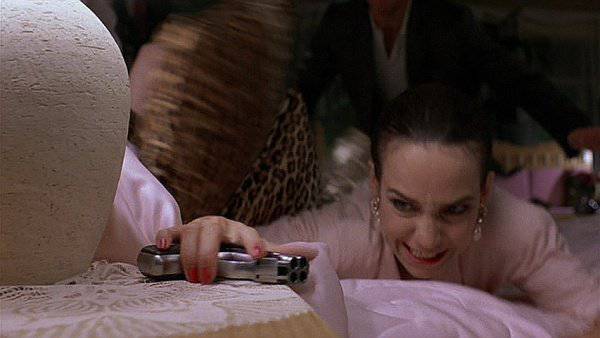
Blood In, Blood Out / Blood pays for blood (1993).
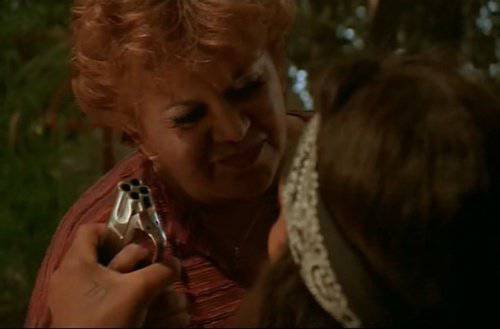
Bad Boys / Bad Boys (1995). Starring Martin Lawrence and Will Smith.
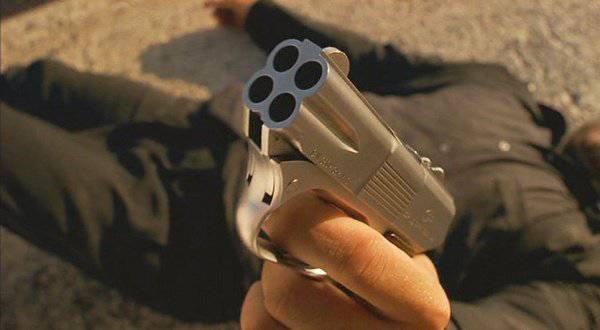
Crying Freeman / Crying Killer (1995). Starring Mark Dacascos.
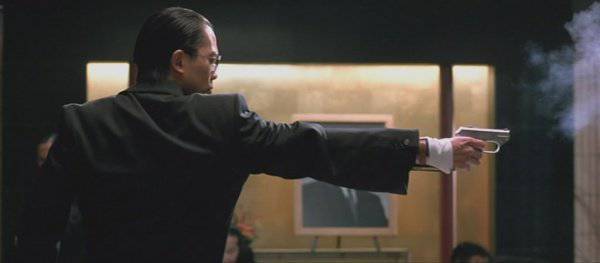
The Matrix Reloaded / Matrix: Reload (2003). With the participation of Monica Bellucci.
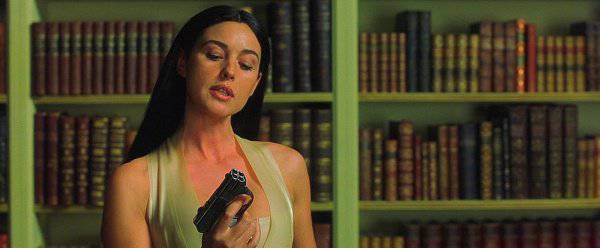
War / War (2007). Starring Jet Li and Jason Statham.
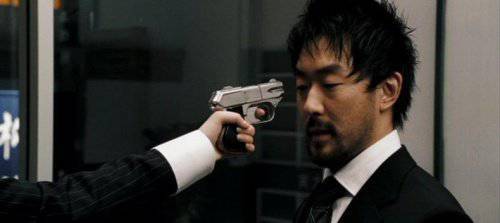
21 Jump Street / Macho and Bot (2012).
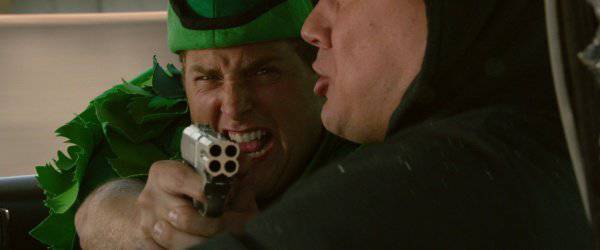
Black Out / Memory Dips (2012).
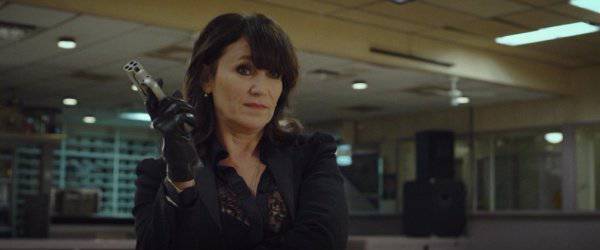
TV shows that used a COP .357 Derringer pistol:
Battlestar Galactica / Star Cruiser "Galaxy" (2004).
Stargate SG-1 / Stargate: ZV-1 (1997 — 2007).
Special Unit 2 / Unclean Hunters (2001 — 2002).
Psych / Clairvoyant (2006 — 2014).
Anime in which a COP .357 Derringer pistol was used:
Monster (2004-2005).
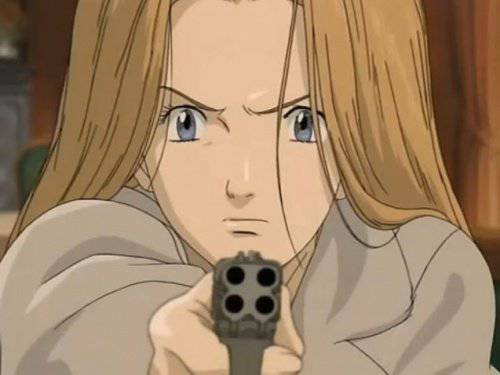
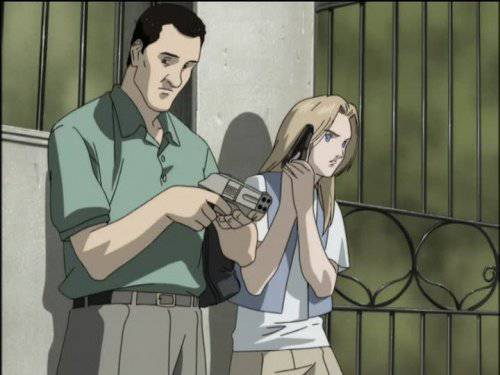
A game in which a COP .357 Derringer pistol was used:
Team Fortress 2.
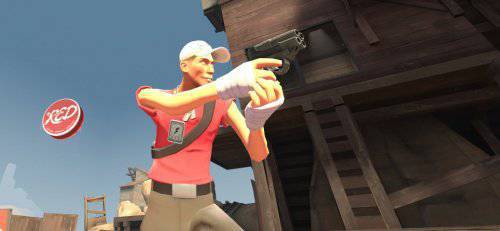
To be continued ...
Information sources:
http://en.wikipedia.org
http://ru.wikipedia.org
http://www.armslist.com
http://www.guns.com
http://zbroya.info
http://props.steinschneider.com
http://www.kitsune.addr.com
http://www.onpointsupply.com
http://spec-naz.org
http://weaponland.ru
http://www.shooting-ua.com
http://forum.guns.ru
http://world.guns.ru
COP pistol shooting 357 Derringer
Overview of the configuration and appearance of the resource GunWebsites
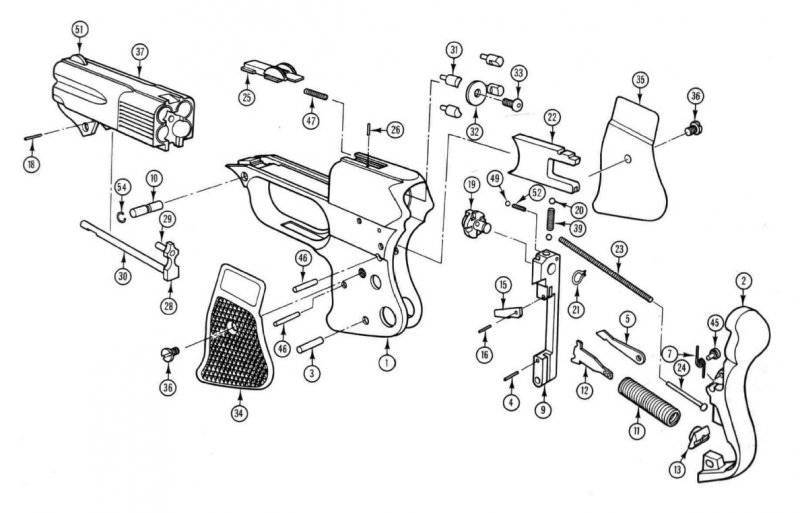
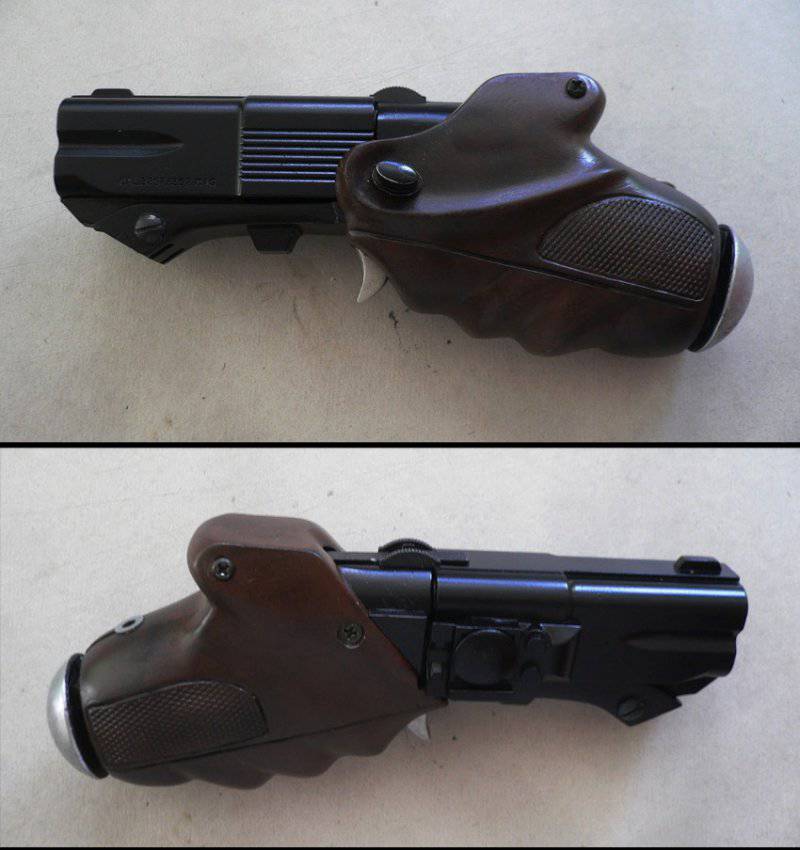
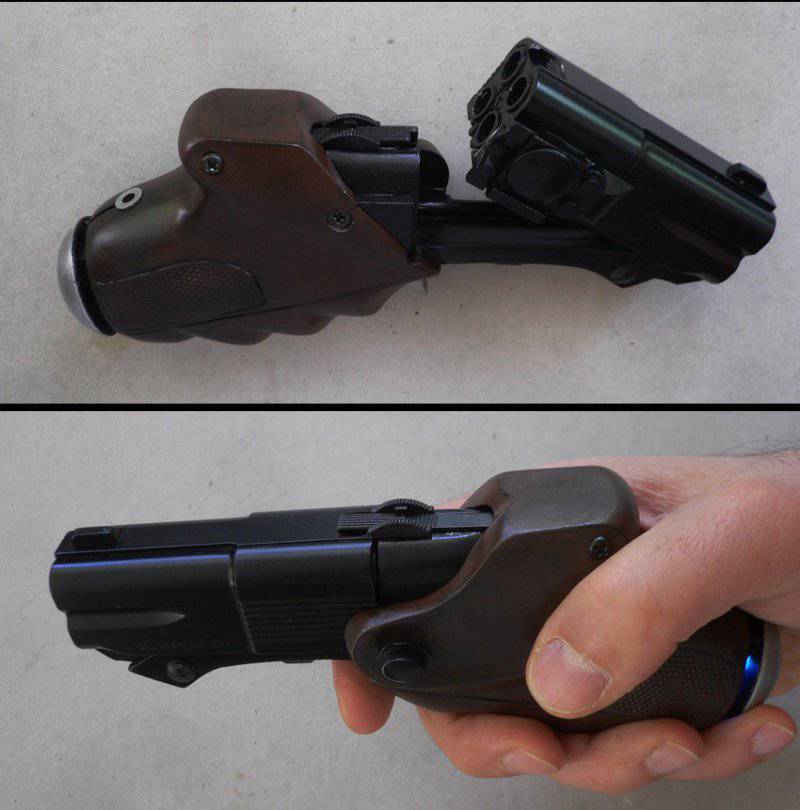
Information